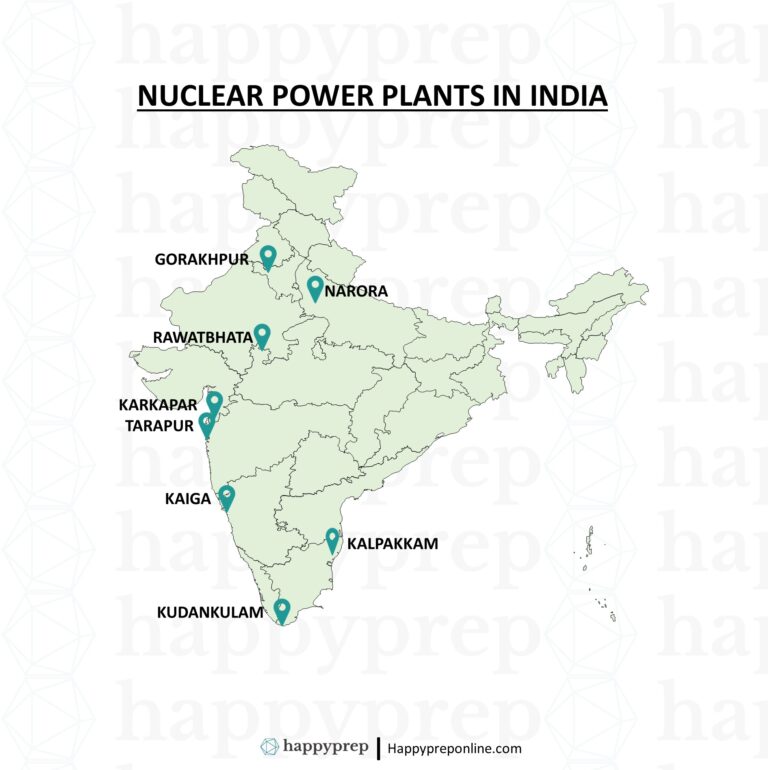Nuclear Power Plants in India
History of Nuclear Powerplants in India
India’s nuclear program or the Nuclear powerplants in India started soon after the independence in 1947 to ensure energy security and to harness nuclear energy for peaceful use to encourage growth of the young nation. Dr Homi Jehangir Bhabha is often referred to as the father of indian nuclear science. He was instrumental in setting-up the Tata Institute of Fundamental Research (TIFR) in 1945. He was also appointed as the first chairman of the Indian Atomic Energy Commission.
Evolution of Nuclear Powerplants in India
India’s nuclear program can be categorized mainly into 3 stage:
Stage 1 - Pressurized Heavy Water Reactors (PHWRs)
These reactors use natural uranium to produce electricity and plutonium as a by-product.
Stage 2 - Fast Breeder Reactors (FBRs)
In these reactors, Plutonium produced in the first stage was used to produce more fissile material than they consumed.
Stage 3 - Thorium-Based Reactors
Since India has a good reserve of thorium, the reactor is designed to use Thorium-232 to produce uranium-233.

State | Nuclear Power Plant |
Gujarat | Kakrapar Atomic Power Station (KAPS) |
Haryana | Gorakhpur Nuclear Power Plant (GNPP) |
Karnataka | Kaiga Atomic Power Station (KAPS) |
Maharashtra | Tarapur Atomic Power Station (TAPS) |
Rajasthan | Rawatbhata Atomic Power Station (RAPS) |
Tamil Nadu | Kudankulam Nuclear Power Plant (KKNPP) |
Madras Atomic Power Station (MAPS) | |
Uttar Pradesh | Narora Atomic Power Station (NAPS) |
Nuclear Fission and Fusion
Nuclear Fission
Nuclear fission is the process in which a heavy atomic nucleus splits into two smaller nuclei and also releases a huge amount of energy. This reaction powers most nuclear power plants.
Fission Reaction Example:

- Uranium-235 (U-235) absorbs a neutron and becomes unstable.
- It splits into Barium-141 (Ba-141) and Krypton-92 (Kr-92).
- The reaction releases three free neutrons and a significant amount of energy.
Nuclear Fusion
Nuclear fusion is the process in which two light atomic nuclei combine to form a heavier nucleus and simultaneously releases huge amount of energy. Nuclear Fusion powers the sun and holds the potential for nearly limitless and clean energy.
Fusion Reaction Example:

- Deuterium (D) and Tritium (T) nuclei combine.
- they form Helium-4 (He-4) and a neutron.
- The reaction releases a substantial amount of energy.



